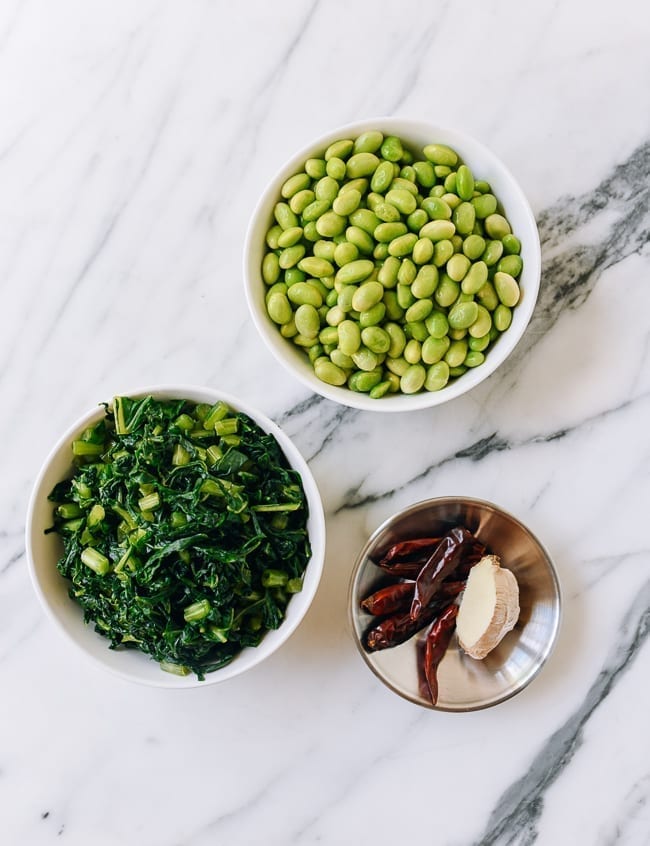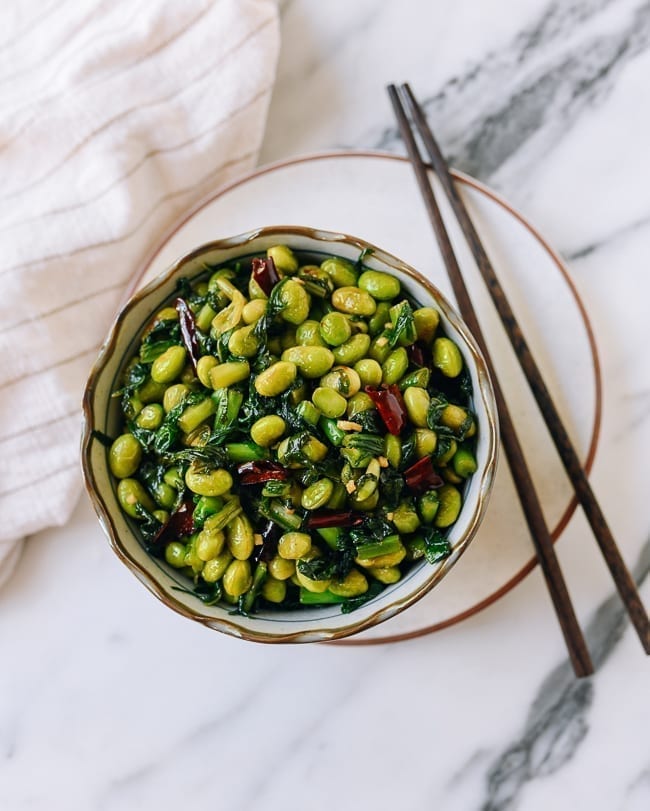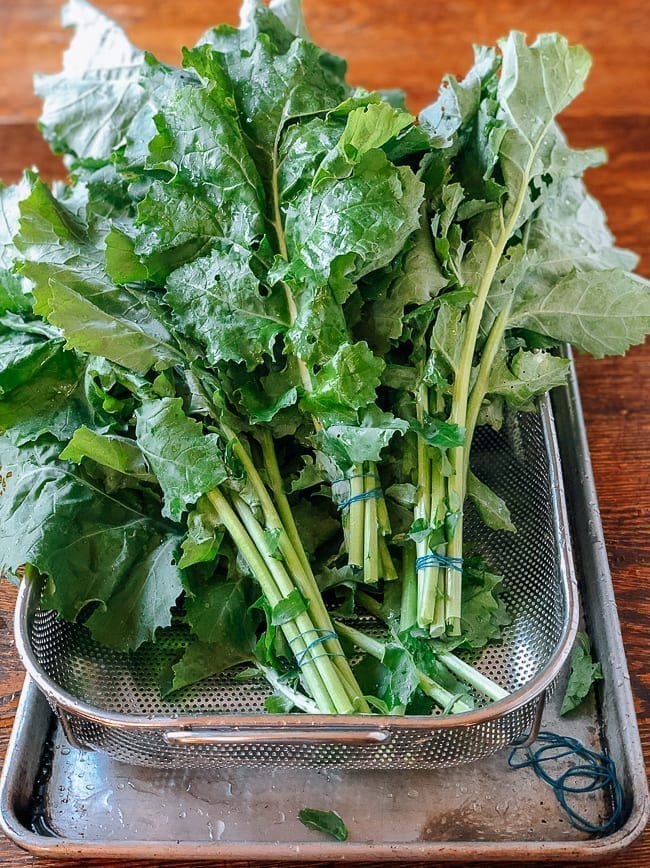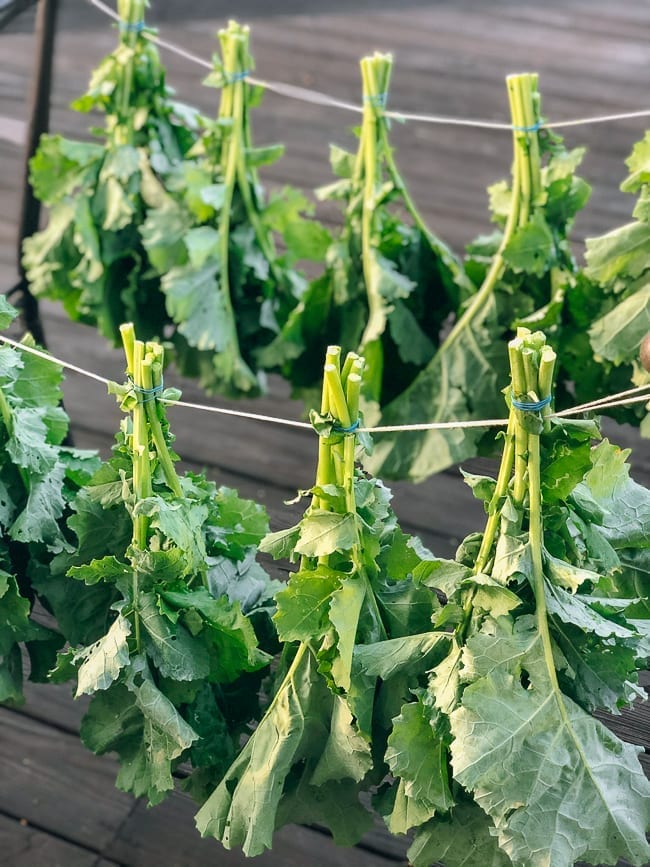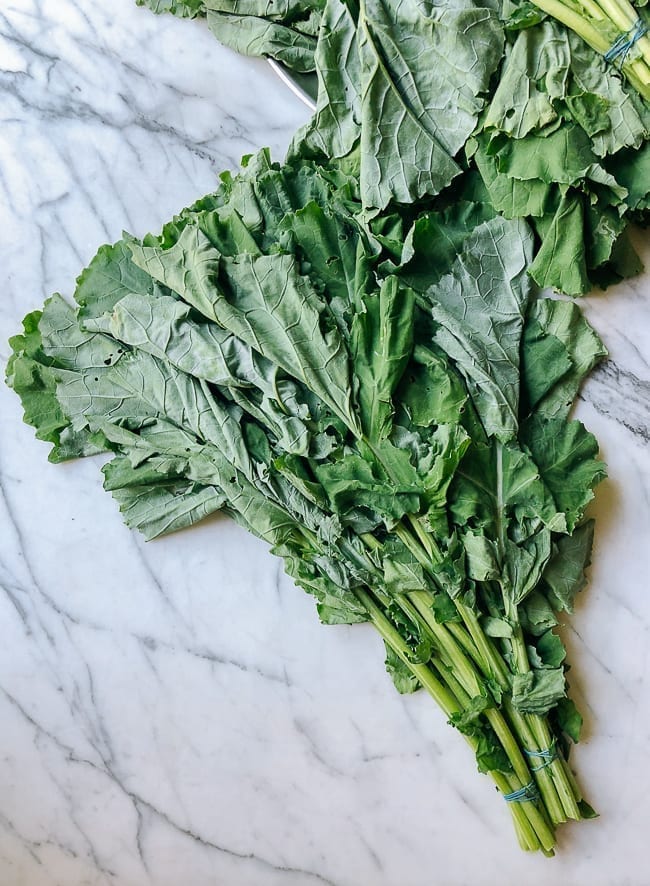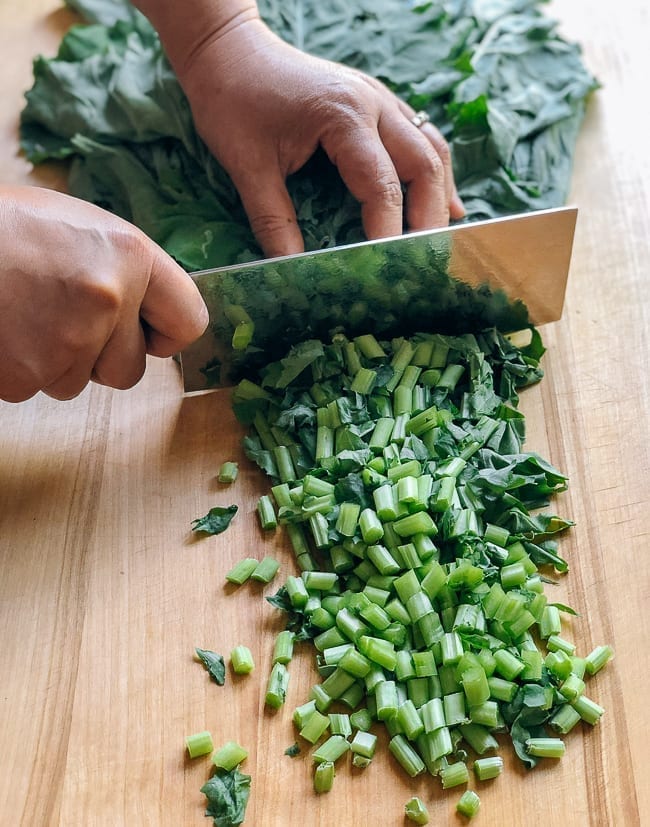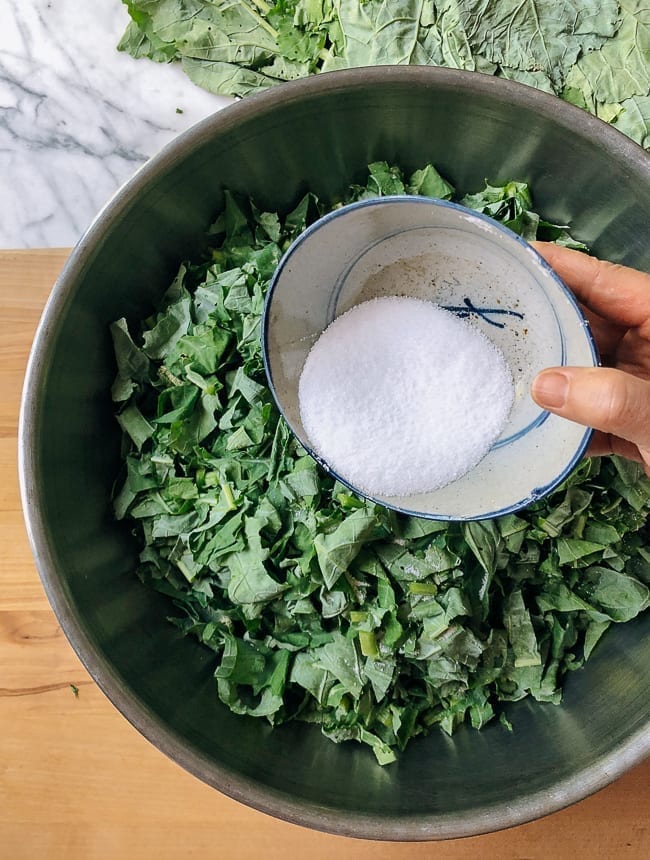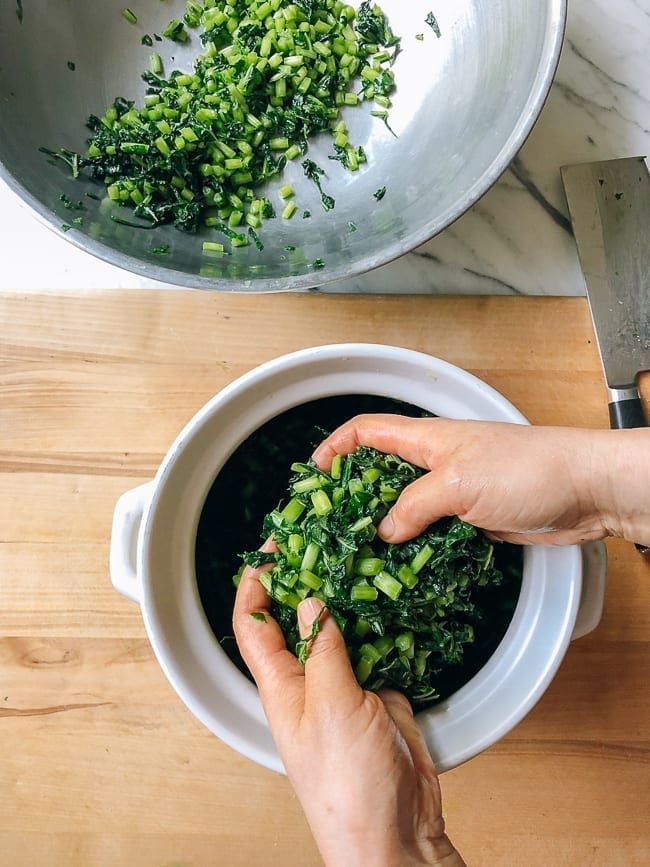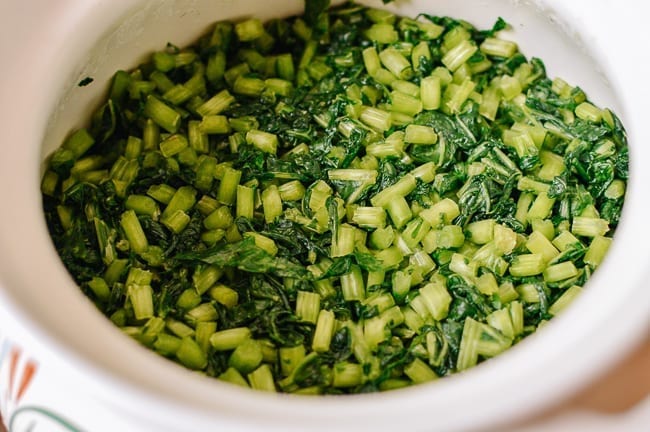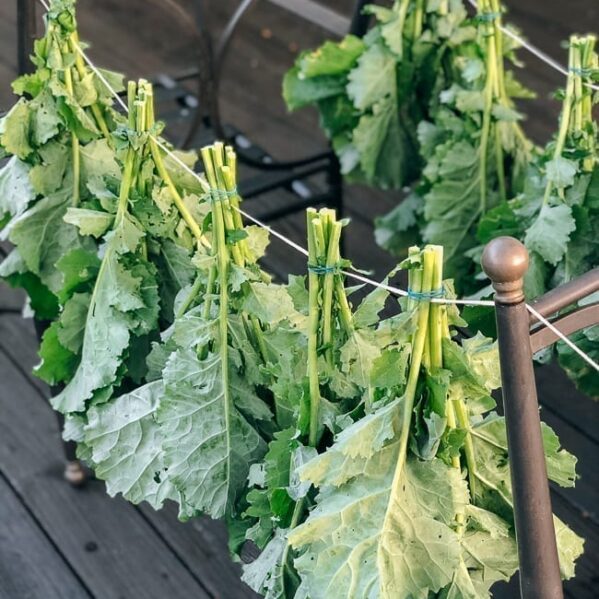You can use any leafy, robust vegetable, like tender kale, mustard greens, or radish greens, which are ideal candidates for this recipe!
Preserving An Abundance of Summer Greens
This time of year, your garden or local farmer’s markets are exploding with the best fresh summer produce. This year, we got an early start on the garden. We’ve already enjoyed a couple of rounds of leafy green harvests, and we’re also starting to see a steady stream of peppers, eggplant, okra, and squash. Next up will be summer tomatoes. (Stay tuned for a tour of our garden soon!) That said, my early spring kale did extremely well, to the point that everyone was making “This again?” faces when it showed up on the dinner table. The kale we grow in our garden is a super tender heritage variety (though I’m unsure of its name). The stems aren’t woody and tough like store-bought kale, and the leaves are very tender as well. I love planting kale, because you can harvest individual leaves, and let the plant continue producing new leaves. The yield is tremendous. Even better, for many leafy greens, you can plant them twice a year—once in the spring and once in the late summer like now, as they do best in slightly cooler weather.
That said, I had a lot of extra kale this year! I washed, chopped, and froze plenty for the upcoming winter months, and decided to preserve some, since getting store-bought salted mustard greens has been a bit challenging, as we’re trying to minimize trips to the store. The batch of preserved Chinese greens I made a month and a half ago is still holding up great in the refrigerator in a glass container.
How To Use Preserved Greens
Let me address WHY you would preserve your greens this way and what you could potentially do with them! We have already posted a few pickled and preserved vegetable recipes, like my easy pickled cucumbers and preserved radish and pickled cabbage. Those are other great options for storing away your summer produce, but this one is a great addition to my collection, as it has so many uses in some of our favorite dishes:
Noodle Soup with Pork and Pickled Greens Taiwanese Pork Chop Plate Yunnan Rice Noodle Soup Taiwanese Beef Noodle Soup in an Instant Pot
Or you can just do something as simple as sauté the preserved greens some with edamame and dried chilies for a great vegan meal or side dish to round out a Chinese dinner!
These days, I’m all for recipes that prolong the shelf life of my ingredients! The best part is that salt is the only ingredient you need for this recipe. The natural flavor of the greens, time, and fermentation does the rest.
Important Considerations
All that said, some important notes on making preserved and pickled vegetables at home:
Make sure anything that comes in contact with the vegetables is clean and without dirt, oil or grease. For example: your hands, knife, storage containers, utensils, the rack used to let them dry, etc. In the event these greens turn moldy, stinky or generally yucky after being preserved and stored in the refrigerator, you’ll know that grease or other contaminants got into it somehow. You will have to throw everything out if that happens. So be VERY mindful when handling! Be sure your storage container is clean, sanitized, and non-reactive (glass works best). When eating your preserved vegetables, remove what you need from the container and put it back in the refrigerator. It will help your preserved vegetables last longer if they’re not kept at room temperature for prolonged periods.
Chinese Preserved Greens: Recipe Instructions
6 pounds fresh kale, mustard greens, or radish greens 100 grams sea salt (about ⅓ cup)
Make sure all containers, work surfaces, your knife, and your hands are thoroughly cleaned and free of any dirt, grease, or grime. Wash the greens thoroughly. This requires a few rounds of soaking and rinsing off of any debris. Let them air dry completely for 12 hours. If you have loose stalks and leaves like I did, you can bundle them together with kitchen string or rubber bands, and hang them on a line of clean twine to dry.
Because it was a sunny, dry day, I hung my kale outside. Once all the leaves are dried (free of surface water, not dehydrated) and slightly wilted…
Chop them to your desired size—I did small slivers. You can also cut them into larger chunks or leave them whole.
In a large bowl, sprinkle salt onto every layer of greens. Knead the vegetables with clean hands to work the salt in, until they are well coated.
Transfer everything to a clean container with a cover.
Marinate in the refrigerator for at least 3 days. After three days, they are ready to be used!
Here are some additional tips for using your Chinese preserved greens:
Use clean utensils to take what you need each time you use them. Return to the refrigerator quickly. Be attentive to any signs of spoilage like weird smells or mold. These preserved greens are mild, but also relatively salty. I used them here stir-fried with soy beans and chilies, and no additional salt was required. Taste as you go when cooking with them. If you find they are still too salty for your chosen application, you can rinse them off before cooking. If you do this, be sure to squeeze out all of the excess water before using.

